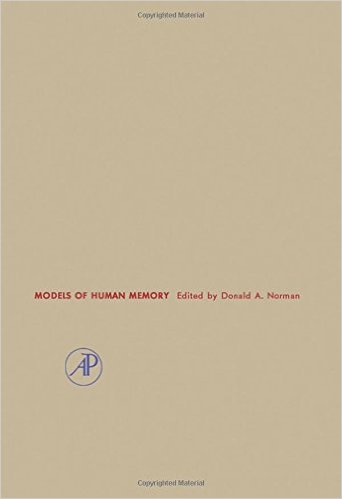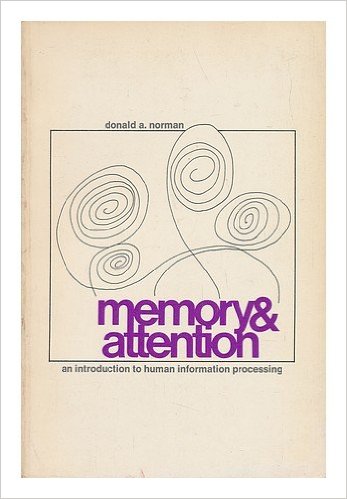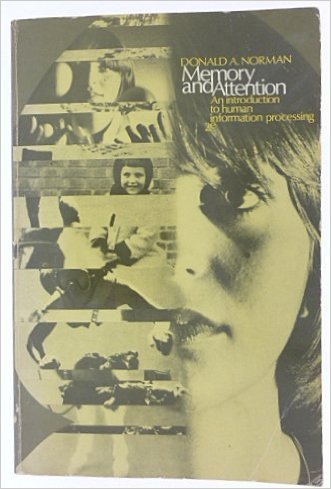 Don Norman is a voyeur, always watching, always on the lookout for some common-day occurrence that everyone else takes for granted but that when examined, yields insight into the human condition. (If you are rushing to catch a train, how do you know if you got to the station on time? Empty platform? You probably are too late. People milling about, looking at their watches,peering down the tracks? Probably OK. Who needs technology when people are so informative, even if as an accidental byproduct of their activities.
Don Norman is a voyeur, always watching, always on the lookout for some common-day occurrence that everyone else takes for granted but that when examined, yields insight into the human condition. (If you are rushing to catch a train, how do you know if you got to the station on time? Empty platform? You probably are too late. People milling about, looking at their watches,peering down the tracks? Probably OK. Who needs technology when people are so informative, even if as an accidental byproduct of their activities.
Business Week has named him one of “the world’s most influential designers,” the influence from his books, essasys, courses and students, lectures, and consulting.
He takes special delight in the interaction of people and technology. “Develop the skill of observation,” he councils: especially pay attention to the obvious. “Question the obvious and you will dis cover many hidden insights. What seems to be obvious often is not.”
He is a fellow of many organizations and former lots of things, including VP at Apple Computer and even President of a startup. He has honorary degrees from the University of Padua (Italy) and the Technical University Delft (the Netherlands). He was awarded the Benjamin Franklin medal in Computer and Cognitive Science and is a member of the National Academy of Engineering. He is known for his books “The Design of Everyday Things,” “Emotional Design,” and “The Design of Future Things,” but he is most proud of his students, now all over the world, who put into practice his human-centered design philosophy. his latest book is “Living with Complexity,” which argues that complexity is necessary: Our tools must match our tasks. When people cry out for simplicity, they are wrong — people want understanding. That is not the same as simplicity — simple thing are often the most confusing.
He is currently revising “Design of Everyday Things” to keep the message the same but update the examples. Expected publication date is August 2013.
He lives at www.jnd.org, where you can find chapters from his books and loads of essays.
Don Norman is a voyeur, always watching, always on the lookout for some common-day occurrence that everyone else takes for granted but that when examined, yields insight into the human condition. (If you are rushing to catch a train, how do you know if you got to the station on time? Empty platform? You probably are too late. People milling about, looking at their watches,peering down the tracks? Probably OK. Who needs technology when people are so informative, even if as an accidental byproduct of their activities.
Business Week has named him one of “the world’s most influential designers,” the influence from his books, essasys, courses and students, lectures, and consulting.
He takes special delight in the interaction of people and technology. “Develop the skill of observation,” he councils: especially pay attention to the obvious. “Question the obvious and you will dis cover many hidden insights. What seems to be obvious often is not.”
He is a fellow of many organizations and former lots of things, including VP at Apple Computer and even President of a startup. He has honorary degrees from the University of Padua (Italy) and the Technical University Delft (the Netherlands). He was awarded the Benjamin Franklin medal in Computer and Cognitive Science and is a member of the National Academy of Engineering. He is known for his books “The Design of Everyday Things,” “Emotional Design,” and “The Design of Future Things,” but he is most proud of his students, now all over the world, who put into practice his human-centered design philosophy. his latest book is “Living with Complexity,” which argues that complexity is necessary: Our tools must match our tasks. When people cry out for simplicity, they are wrong — people want understanding. That is not the same as simplicity — simple thing are often the most confusing.
He is currently revising “Design of Everyday Things” to keep the message the same but update the examples. Expected publication date is August 2013.
He lives at www.jnd.org, where you can find chapters from his books and loads of essays.
Source: Author’s page on Amazon.com




